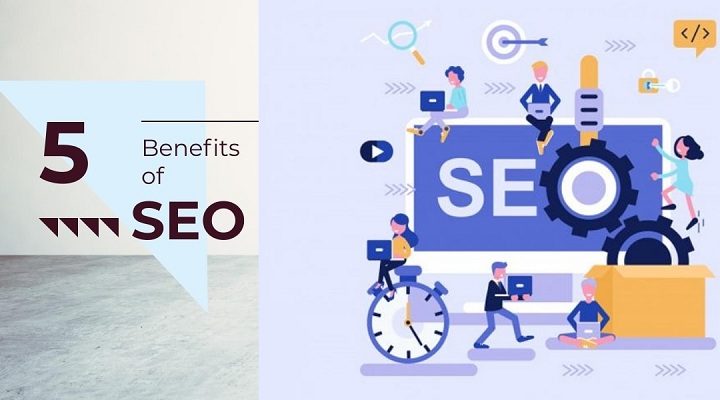
SEO
As technology rules our lives today, businesses must include digital marketing strategy as part of their overall marketing strategy. Since users first search for anything on the internet, it becomes imperative that companies have an online presence and take the help of some companies that provide digital marketing services to engage with consumers online and make business happen. In addition, digital marketing can help enterprises to survive the competition that is becoming intense every day and drive it towards growth.
Digital marketing encompasses various channels of marketing that can help to achieve different business goals. The channels can include own media, paid media or earned media, including citations about your business on third-party websites. Most businesses prefer to start their digital marketing campaigns by using their media or websites. It gives them complete control over the campaign and effectively achieves business success as reflected in the revenue earned.
The most popular digital marketing channel is SEO marketing because it has been the front runner among all digital marketing techniques for years. Had SEO marketing not happened first, it would not be possible to have so many other types of digital marketing channels. Therefore, it will not be wrong to say that SEO marketing is the mother of digital marketing. All other online marketing channels use the SEO plank to maintain their existence.
In this connection, it is important to clarify that search engine optimization marketing and search engine marketing (SEM) appear to be the same. Therefore, we often use the terms interchangeably. However, these are different from one another, although it might not be easy to make out the differences. But if you want to use any of these, you should know the differences to make the right choice for achieving your business goals in the most effective manner.
What is Search engine marketing (SEM)?
Search Engine Marketing allows you to use paid advertising for improving your search ranking, which in turn increases the visibility of your website. One of the most visible applications of SEM is Pay per Click advertising or PPC advertising which is a form of online advertising that directly impacts search ranking. When done correctly, PPC campaigns are highly effective for improving search rankings significantly and quickly. Companies that want to ensure faster ROI often choose PPC marketing.
Benefits of SEM
The main benefit of SEM is that you can ensure that your content is visible to the searchers in their search results. It does away with the long wait for results when competing in the organic space because your ads appear on the most visible part of the SERP above the search results. It will surely draw maximum attention and even encourage viewers to click on it as the sponsored ads appear more authentic in finding the most relevant answer to the search query. It is more effective in reaching out to the target audience and driving qualified traffic to your website that boosts conversions.
As mentioned earlier, SEM originates from SEO and includes some of its best practices and widens the scope of marketing by including paid search tools like PPC within its folds. Moreover, you can create SEM strategies to include optimization for local searches so that your business can appear in the SRP of people who are looking for solutions somewhere close by.
What is SEO marketing?
SEO marketing relies on organic techniques to make your website appear in the higher ranks of the search result page. Higher ranking translates into more traffic, more leads, and higher conversions that equate with a high return on investment (ROI).
The Google algorithms govern the SEO best practices, and as Google keeps updating its algorithms regularly to ensure a better user experience, the SEO best practices keep evolving with it. Although there are numerous SEO techniques that users can adapt, some standard SEO techniques are its hallmark.
The common SEO components
SEO is keyword driven and inserting keywords most naturally at various places like the heading tags, title tags, alt text, and meta descriptions is one of the most used techniques across the SEO landscape regardless of the strategies.
For SEO, Content is king, and most SEO campaigns rely heavily on blog posts which is the best type of content for engaging the audience that revives some value. However, publishing high-quality content that is useful for users and relevant too is critical for succeeding in SEO, and spreading keywords strategically across the content increases the possibilities of bettering the search ranking.
Creating web pages that open quickly is one of the most important aspects of search engine optimization. Meeting user expectations about speedy websites that open under 3 seconds or being very close to them helps to stay ahead in the competition as fast opening pages are conducive for higher engagement. On the other hand, slow websites are a bane as viewers would look for some alternative website but may not ever return.
Careful formatting of the URLs of the web pages helps to display its relevancy at first glance and have higher chances of opening. As viewers can make out from the URL what the web page is all about, they can quickly decide whether it would be worthwhile to devote time to it. If they find the URL relevant, they will click on it.
In addition to the above on-page optimization techniques, there are many off-page optimization techniques and technical SEO, which play out together to create an effective SEO campaign.
SEO or SEM – What should you choose?
Whether to implement SEO or SEM is a business call because the business goals influence the choice. For example, suppose your budget permits paid campaigns. In that case, you can opt for SEM, or else SEO would be the only other option as it does not require any additional investment for advertising.
Depending on your marketing strategies, you can even combine SEO and SEM provided you have the right resources to manage both campaigns well. Consider your business needs to decide which one will be right for you.



